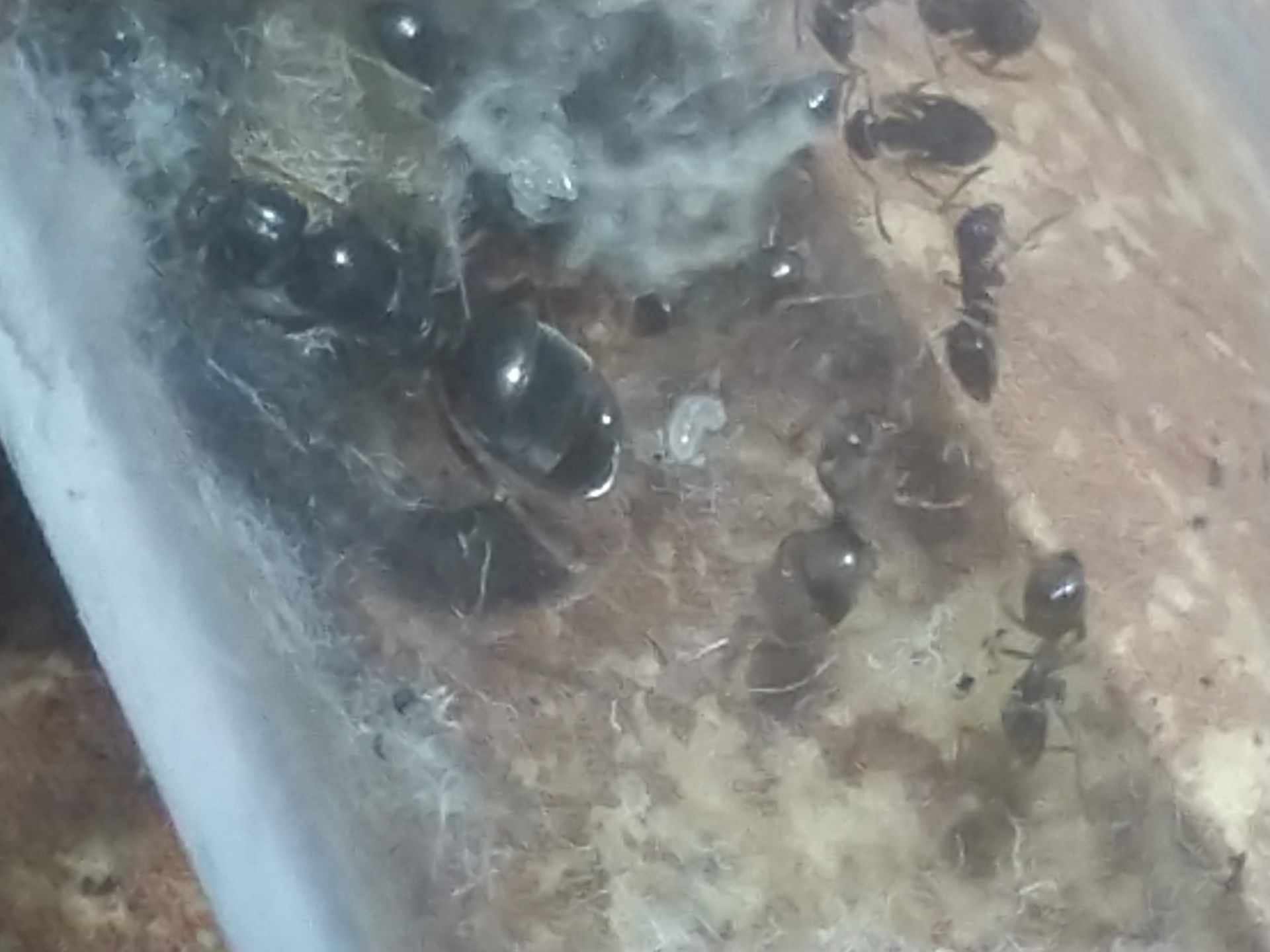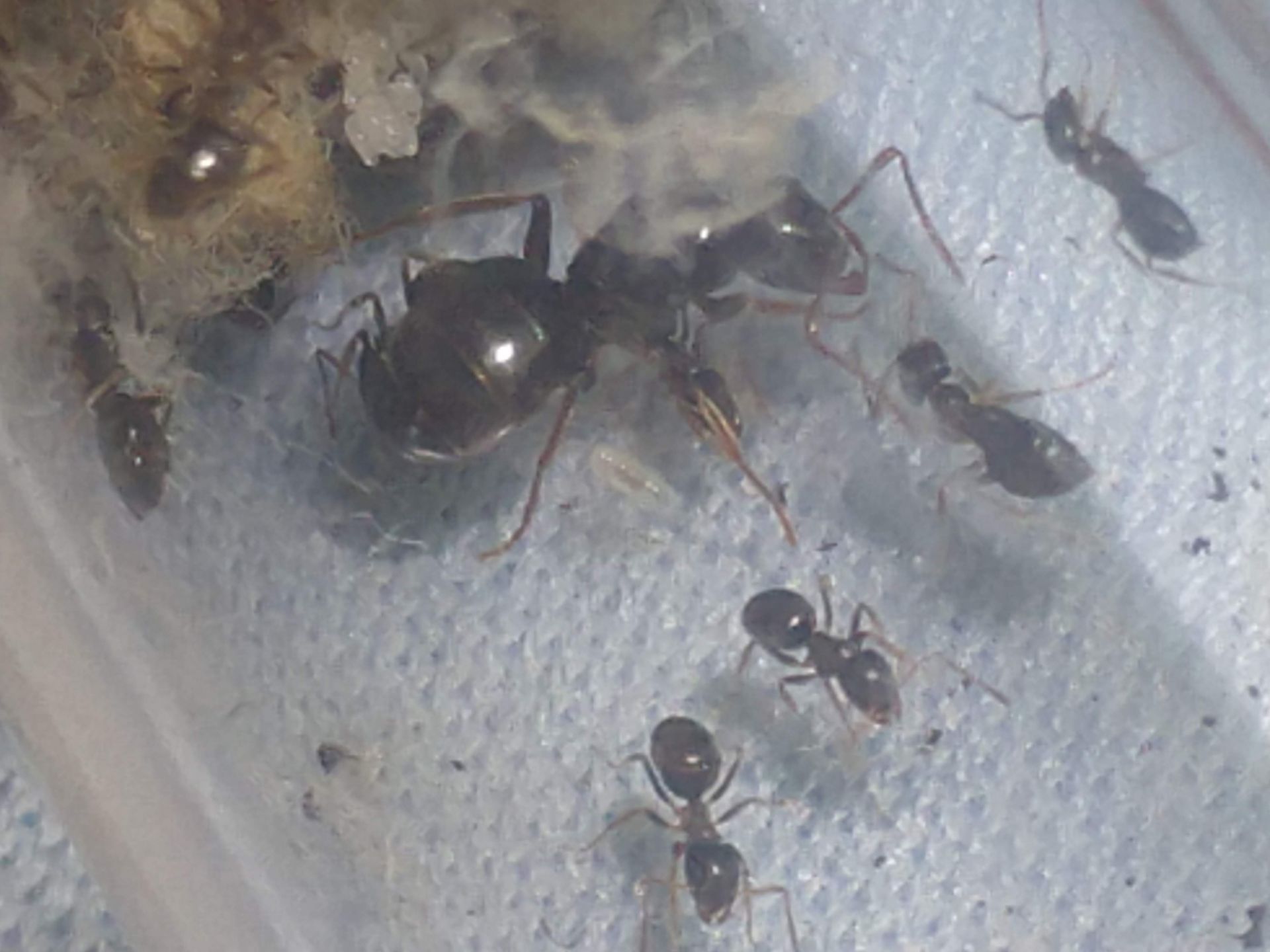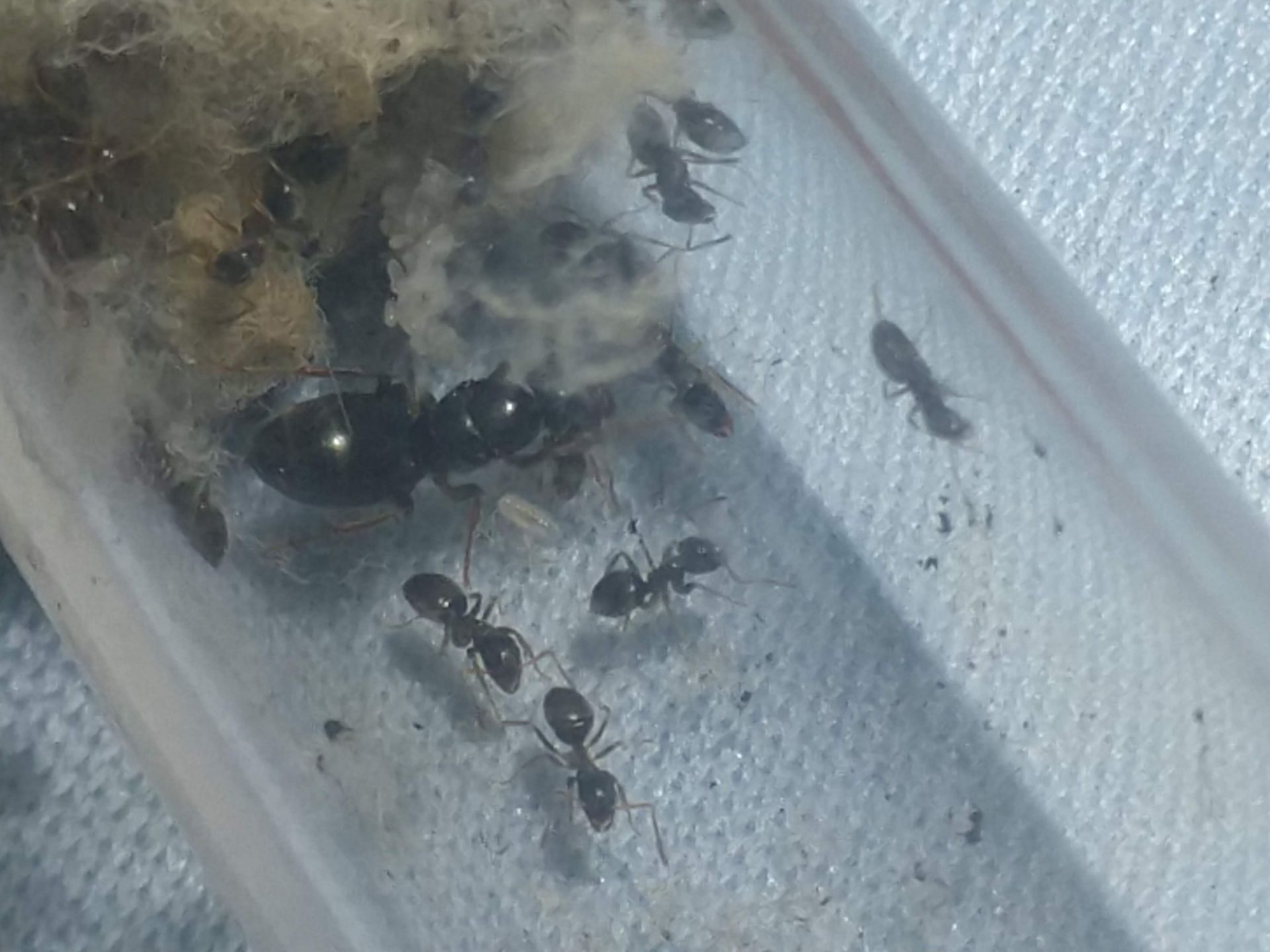On April 3rd 2020 I went out to experience the first Prenolepis flights of the year, and while catching 2 of those, I also caught a few Lasius speculiventris queens. While I was out I grabbed a few dozen Lasius americanus workers to serve as hosts for my new parasite queens. I don't have many pics of the introduction, but knowing that these queens do significantly better with more workers, over the course of a few hours I gave all 30 or so host workers to one queen. At first the hosts would sit all the way at the other side of the tube, but they accepted her one by one and made their way over to the queen. A significant amount died in this process from skirmishes with the queen, so now the colony is down to about 20 or so hosts.
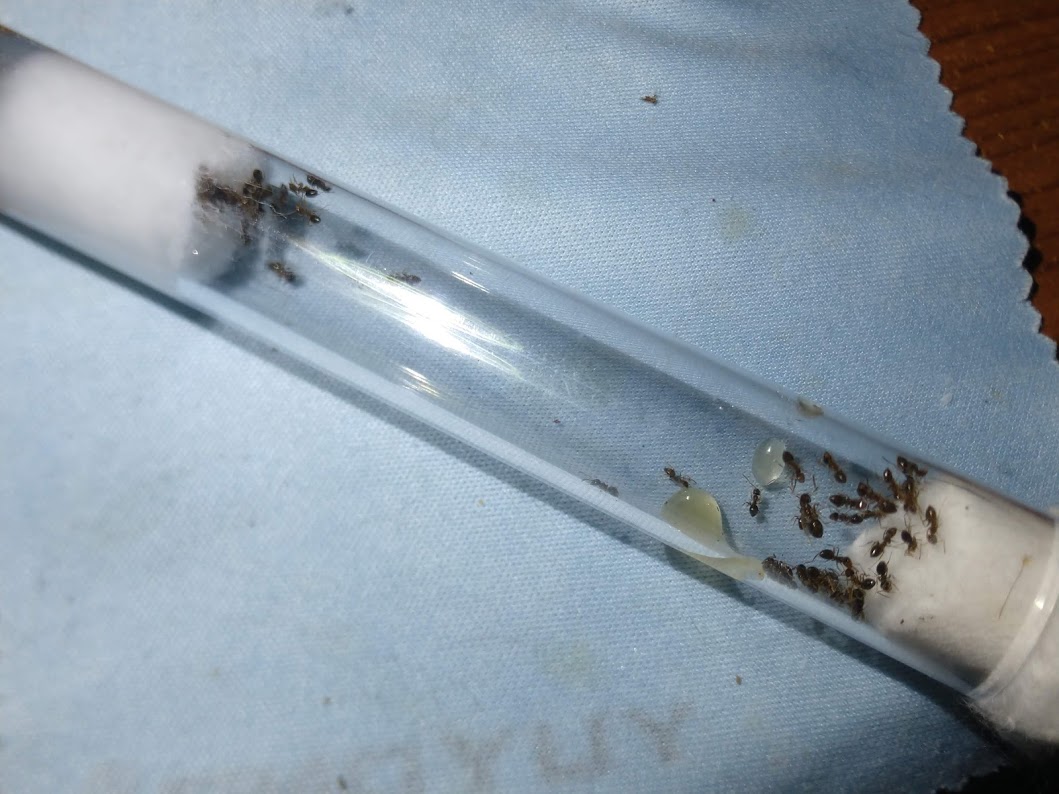
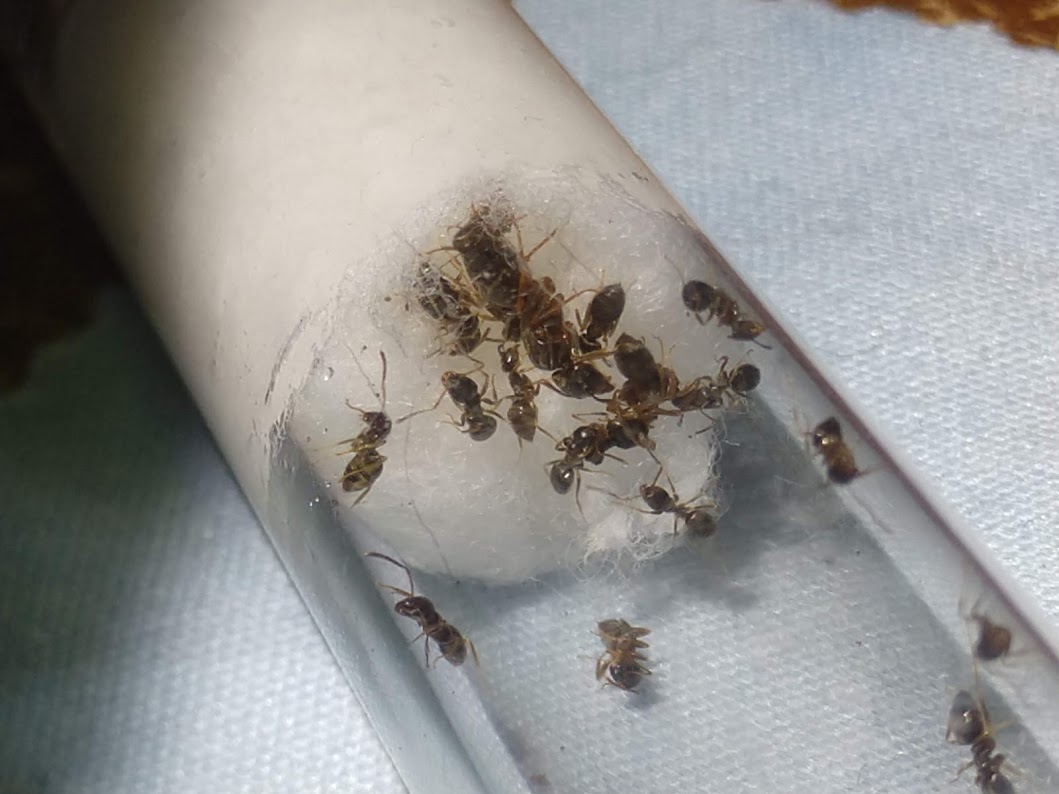
A few days after introduction, it was time for their first protein. I had given them a few drops of honey before just to make sure they were fed, but it was time to get some egg-laying action. As I was feeding them the cricket that I chose for their meal, I actually noticed a pair of eggs!
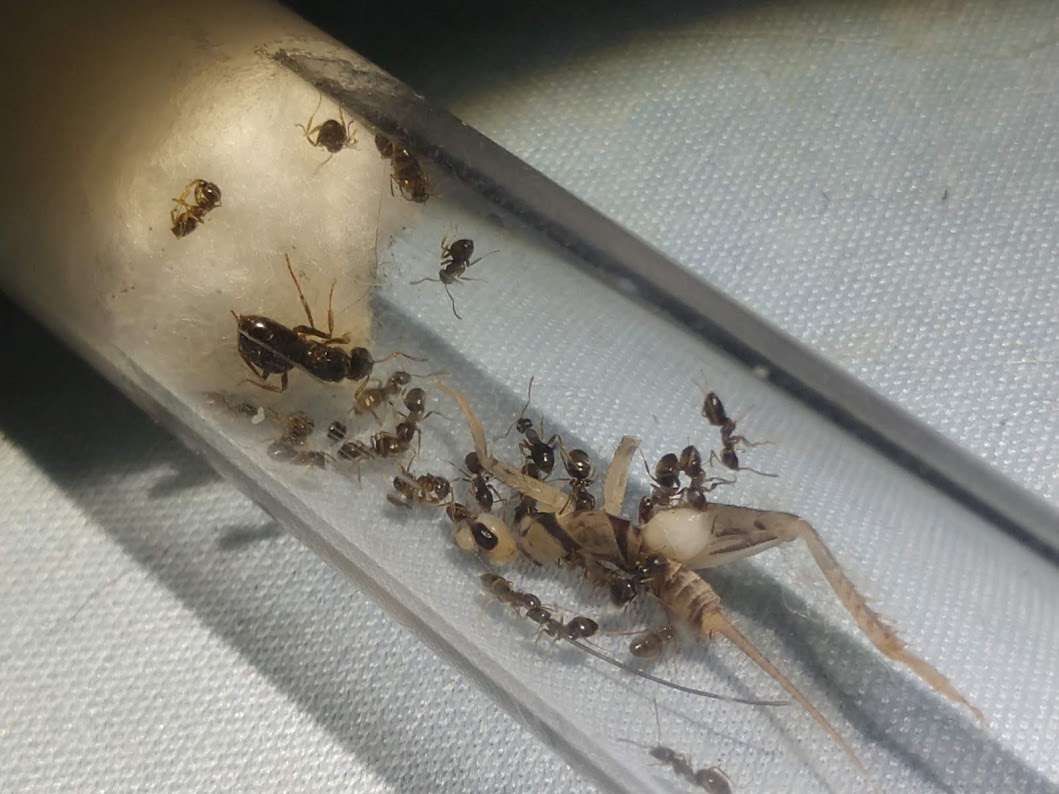
Shortly after feeding, the queen decided to churn out a pretty sizable batch of eggs, around 20-30 or so!
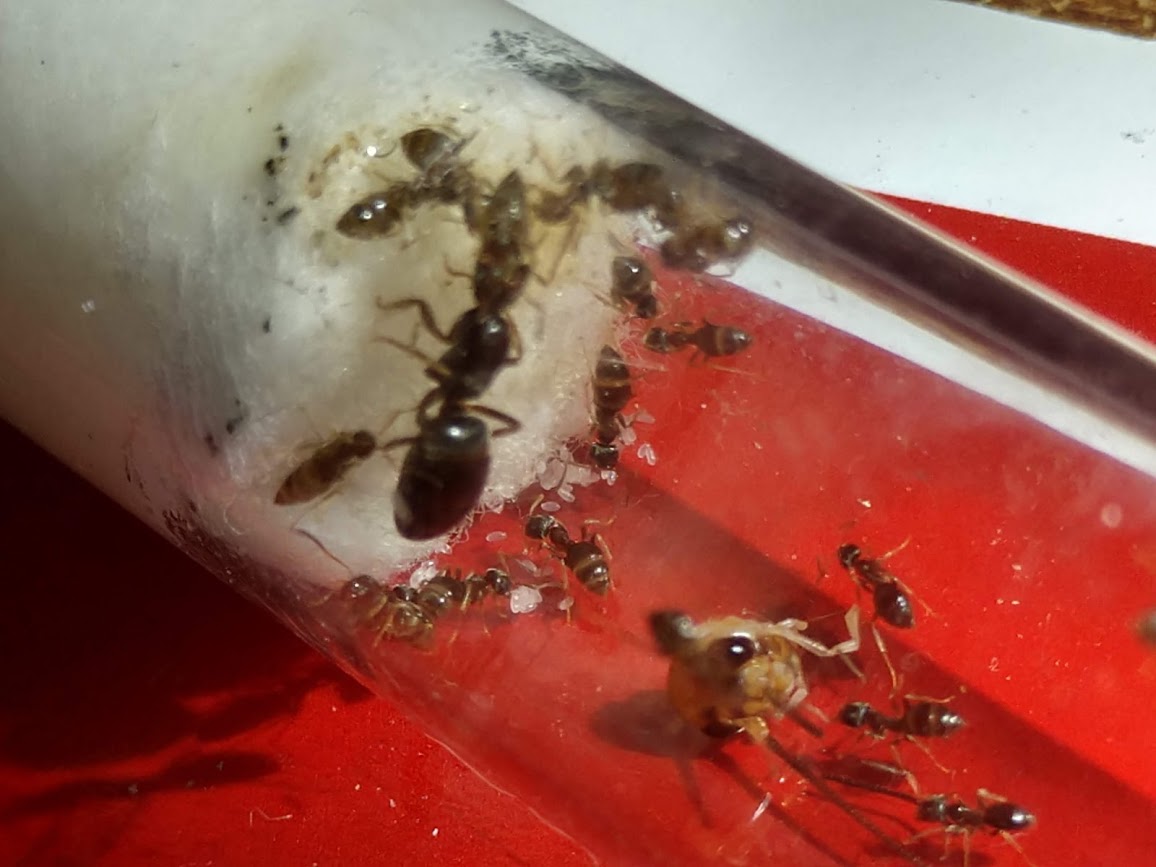
After a handful more feedings, the egg pile is now closing in on a hundred. These queens are absolute egg laying machines. Too bad the brood develops extremely slowly. It's been well over a week and still no larvae to speak for.
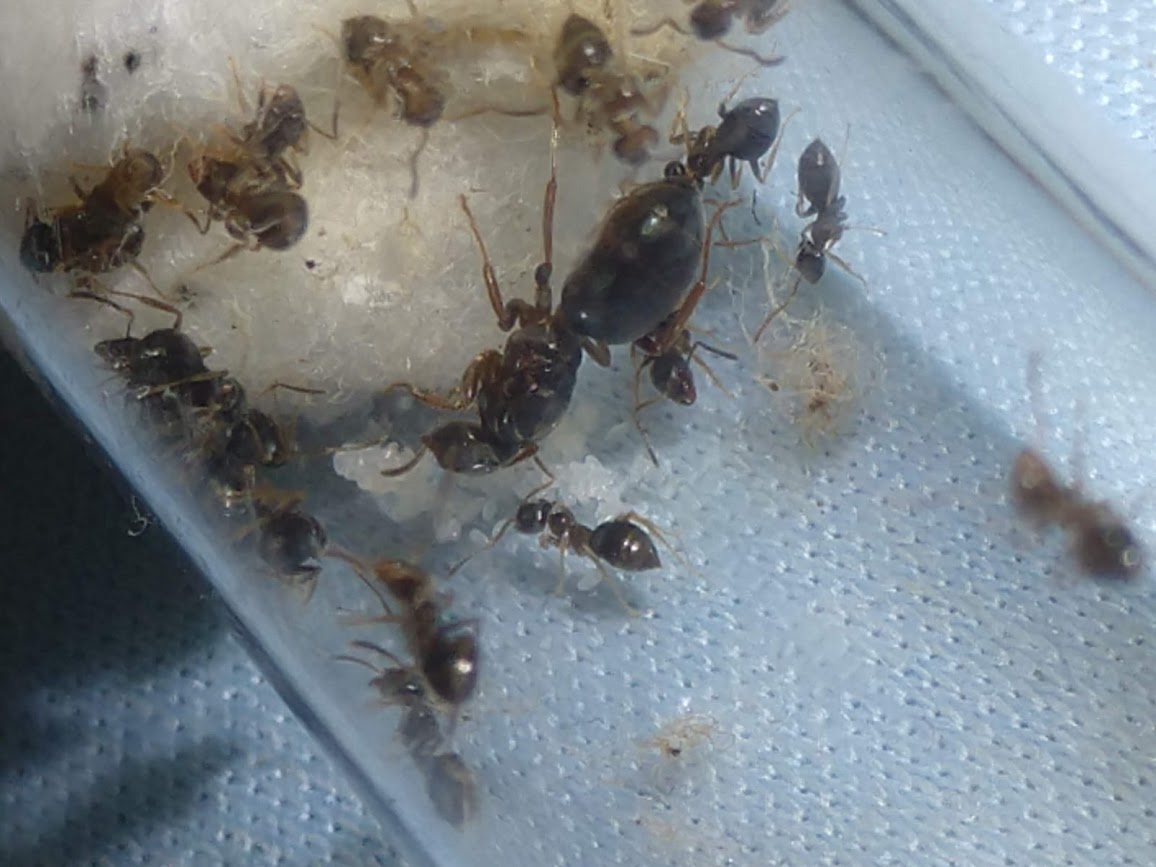
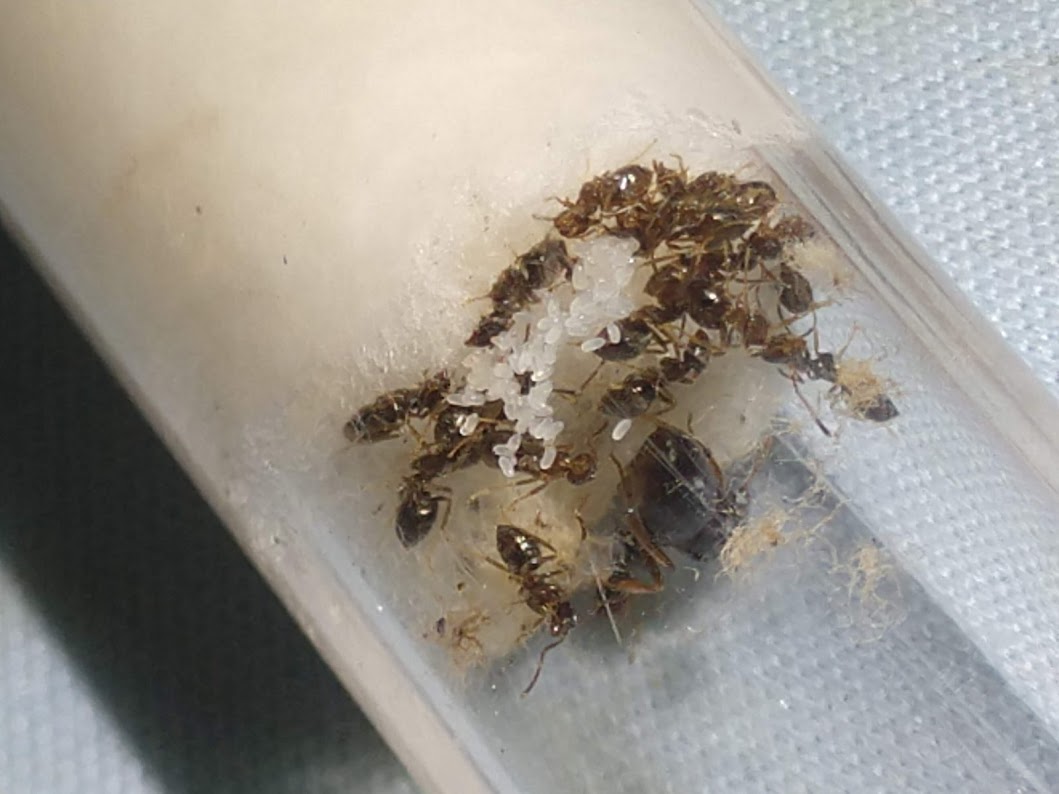
It'll be interesting to see the development from here. Supposedly the introduction is the hardest part, so if that's the case I suppose I'm very lucky! I'll make sure to keep this updated with changes from here on out.
Edited by CheetoLord02, September 30 2020 - 12:40 AM.








